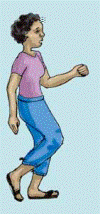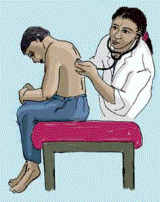The four main non-communicable diseases (NCDs) share common risk factors. Tobacco use, an unhealthy diet, physical inactivity and harmful use of alcohol can lead to heart disease, cancer, diabetes and chronic obstructive pulmonary disease. Read more about recognising the signs of NCDs and how to help to prevent yourself and others from developing these diseases.
CANCER
Cancer is a general term for a large group of diseases that can affect any part of the body. Cancer happens when cells start to grow abnormally beyond their usual boundaries. This abnormal growth can then spread to other organs.
Symptoms
There are over 200 different types of cancer with a variety of symptoms. However some common symptoms include unexplained weight loss, persistent cough, a lump somewhere on the body (particularly in the breasts), unexplained tiredness, difficulty passing urine, changes in bowel movements, skin changes (particularly changes in skin moles) and abnormal bleeding.
Please note: These symptoms may have other less serious causes but if they do not go away you should seek medical advice.
Number of deaths per year worldwide: 7.6 million
COPD
COPD stands for chronic obstructive pulmonary disease. This is a term used for a number of conditions which affect breathing; including chronic bronchitis and emphysema. Patients with COPD have damaged airways in the lungs which have become narrower, making it harder for air to get in and out of the lungs. The word ‘chronic’ means that the problem is long-term. Most cases of COPD are caused by tobacco use.
Please note: The symptoms of COPD are similar to tuberculosis (TB). Anyone who has had a cough for more than three weeks should be tested for TB, particularly in areas where HIV is common.
Symptoms
Cough, phlegm and shortness of breath. Some people may only notice their symptoms in colder weather, or they might put them down to bronchitis or ‘smoker’s cough’.
Number of deaths per year worldwide: 4.2 million
DIABETES
Diabetes is a chronic disease that occurs either when the pancreas does not produce enough insulin or when the body cannot effectively use the insulin it produces. Insulin is a hormone that regulates blood sugar. Hy-perglycaemia, or raised blood sugar, is a common effect of uncontrolled diabetes and over time leads to se-rious damage to many of the body’s systems, especially the nerves, kidneys, eyes and blood vessels. There are two types of diabetes:
- Type 1 usually develops before the age of 40, especially in childhood. Five to 15 per cent of people with diabetes have Type 1 diabetes.
- Type 2 usually develops later in life and shares common risk factors with other NCDs.












